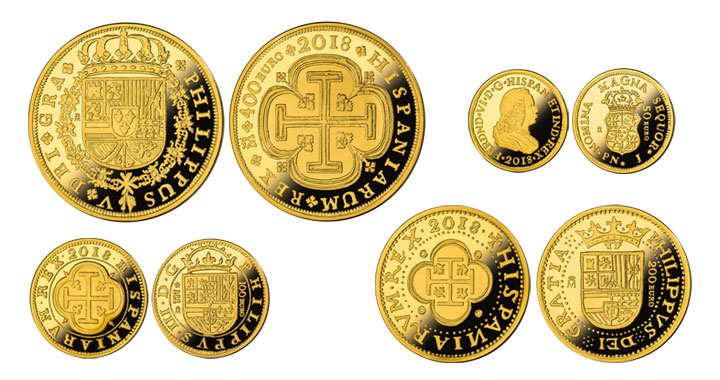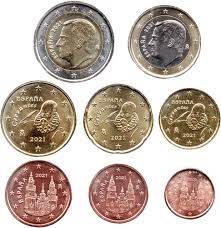Real
The name of this monetary unit comes from the Latin word for “royal” – regalis. If in Russian it was registered with the little-used concept of “regalia”, then the Spanish and Portuguese languages turned it into “real”. It entered everyday circulation when the minting of coins with the same name began. Here the pioneer was Spain, where the real appeared already in the second half of the fourteenth century.
The real was born in noble silver, but subsequent reforms replaced the valuable metal with ordinary copper. Since both Spain and Portugal had an extensive network of colonial possessions, the local monetary units also borrowed a sonorous name, first as a counting measure, and then in the form of coins. In Europe, the real has not been found for a long time, but it remains the main monetary unit of Brazil.
The oldest coins
The development of the monetary system in the country directly depended on the history of the peninsula. It is conditionally divided into the following periods:
Ancient era.
Arab state.
The era of the conquest of new lands and colonies with rich deposits of precious metals.
Spanish Empire.
The newest era – the republics of the 1st half of the 20th century, the dictatorship of Franco and the modern constitutional monarchy.
The first money appeared about 2400 years ago. Coins were made of silver during the existence of the ancient Greek colony of Emporion and were used in almost the entire peninsula.
After the settlement of the territory of Spain by the Arabs, the coinage was modernized. Maravedi were issued – silver and gold money with different content of precious metals. During the Almoravid dynasty (from 1112 to 1220), maravedis were made exclusively from gold.
and after the reconquest of the peninsula by Christians, the denomination became a billon coin (the content of precious metals was a smaller part of the total weight). The banknote was introduced into circulation by the representative of the Burgundian dynasty, King Alfonso X. Subsequently, the maravedi was replaced by the Castilian dobla, which was produced until the end of the 15th century.
Silver escudo
The unification of European monetary systems to a decimal form gave rise in Spain to a coin with the name escudo, which was equal to either a dozen countable reals or a hundred “centimo de escudo” – escudo centimos. Escudo incarnated in silver. His appearance was in 1864.
The well-known saying “The Moor has done his job, the Moor can leave” can be fully attributed to the silver escudo. In 1869, escudos were exchanged for peseta. The silver escudo era lasted only five years. The name of the coin was given by the Latin word “scutum”, meaning a shield with a coat of arms on it. We can see the coat of arms, with few exceptions, on almost any escudo.
Price
Each of the listed coins is part of the history of the country. After the introduction of the euro, not a single Spanish mint is engaged in the issuance of silver money, so the value of the existing ones only increases every year. Antique coins are coins that are more than 100 years old. Their current value depends on:
age;
uniqueness;
rarity;
states.
For example, the average price for 50 centimos is 6-8 USD, for 1 peseta – 8-12 USD, 5 pesetas in normal condition cost from 15 to 25 USD. 2 reals of the 19th century cost 20-25 USD, and 5 reals – 25-30 USD. Medieval reais are much more expensive. So, 1 real 1556-1598. costs 40-50 USD, a sign of a similar denomination 1621-1665. is estimated today at 70-80 USD.
Spanish golden escudo
But this is not all that can be said about the escudo. The historical glory of the coin with this name was not silver at all, but gold. Barcelona, which minted this coin in 1535, can be proud of the firstborn. The coin was pegged to a gold mark (not a coin, but a unit of weight equal to 230 grams). One gold mark (metal purity 91.7%) was equal to sixty-eight escudos. Each coin was obtained with a weight of 3.38 grams. Escudo itself, in turn, was divided into three and a half hundred maravedis.
Philip II, known to us in the form of a cruel and bloody ruler in Til Ulenspiegel, makes the escudo the main coin of Spain with a gold content. Since the ratio of the value of precious metals was extremely unstable, the exchange rate of escudos to silver coins cannot be represented as a strict constant. In one period, an escudo could equal four hundred maravedis, in a later period it already included 544 small coins (at a ratio of 34 maravedis for a silver real, of which sixteen consisted of one escudo).
In connection with a series of protracted economic turmoil, Spain began to devalue its currency by reducing the gold content. The sample of the metal becomes first the 900th, and subsequently the 875th. The last golden escudo was born in 1833.
Post-revolutionary period
In 1911, a revolution took place in the country. After the liquidation of the monarchy, the real was replaced by the escudo (translated as “shield”), equal to 100 centavos. The same word was also used for money in the colonies – Macao, Angola, the Cape Verde Islands, Guinea-Bissau, Mozambique, Sao Tome, Principe and East Timor. Today, this money is used only in Cape Verde.
The weight of the gold badge was 1.866 g (1.679 g of gold) – the Portuguese gold standard was maintained in full.
between 1917 and 1922 1 and 2 centavos were minted in bronze and 4 in copper and nickel.
1920 – 5 centavos made of bronze, as well as 10 and 20 copper-nickel centavos, were put into circulation.
1924 – Bronze 10, 20 centavos, as well as 50 centavos made of aluminum were produced.
1927 – there was a replacement of the metals used in the manufacture of copper and nickel.
1932 – silver 2½, 5 and 10 escudos entered circulation, which were produced until 1955 with a low silver content.
1969 – 10 centavos made of aluminum, 20 and 50 centavos and 1 escudo made of bronze began to be used.
1971 – minting of cupronickel 10 and 25 escudos started.
In 1986, another monetary system began to be used in the country, which lasted until the era of the euro. There were 1, 5, 10 escudos made of nickel and brass, 20 and 50 of copper and nickel, as well as bimetallic 100 and 200 escudos. At the time of the introduction of the euro, money was used in denominations of 1, 5, 10, 20, 50, 100 and 200 escudos.





